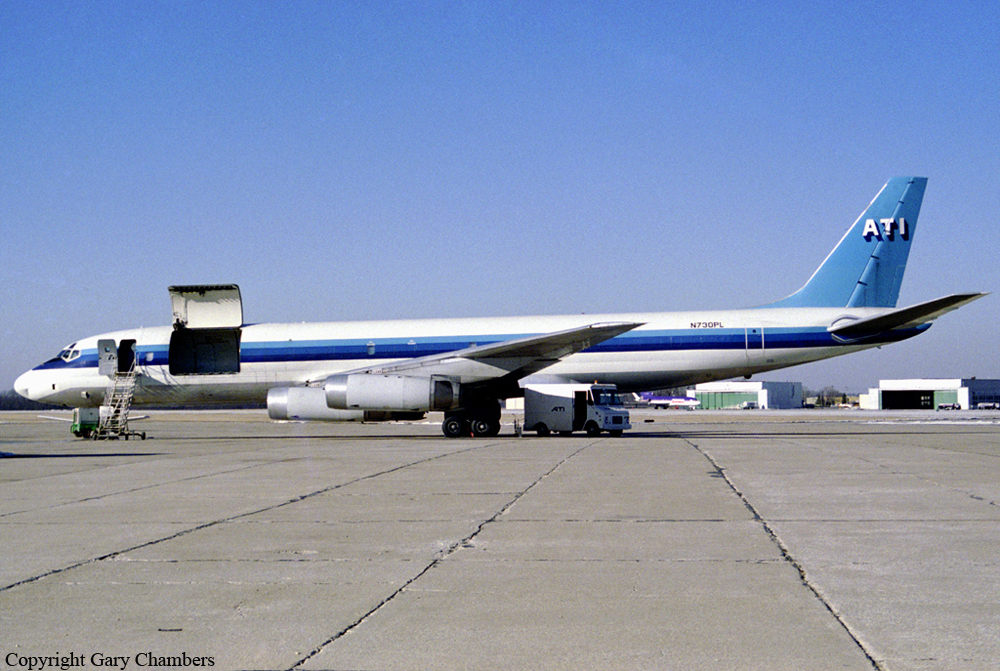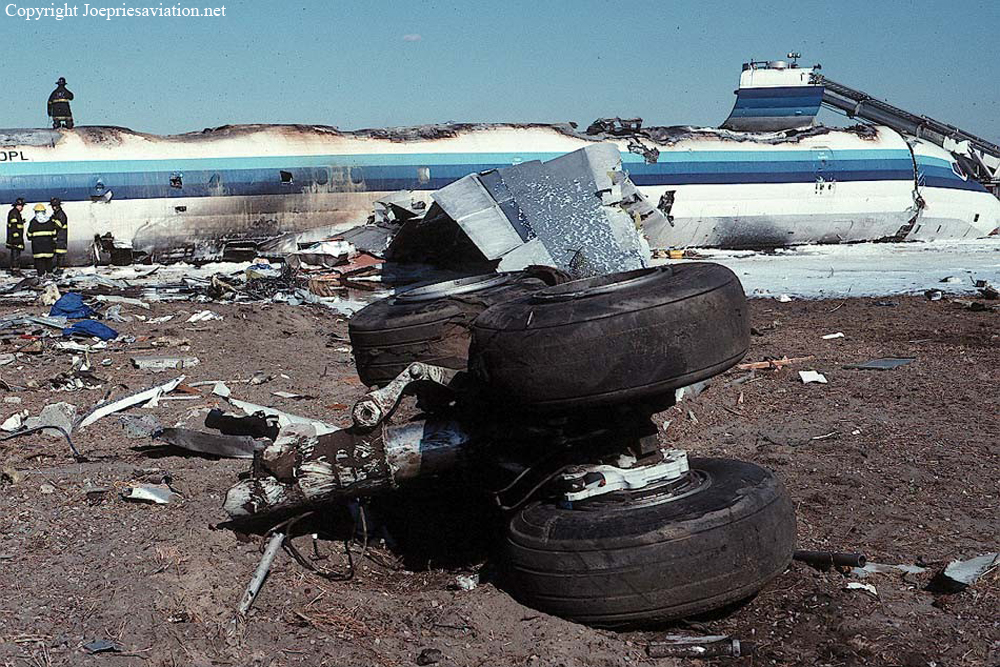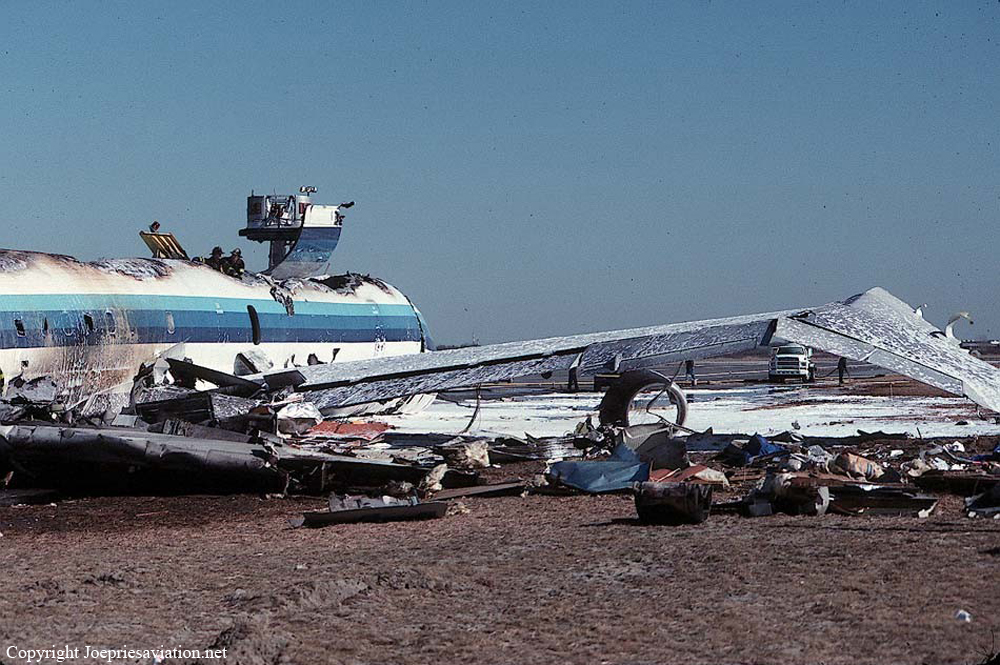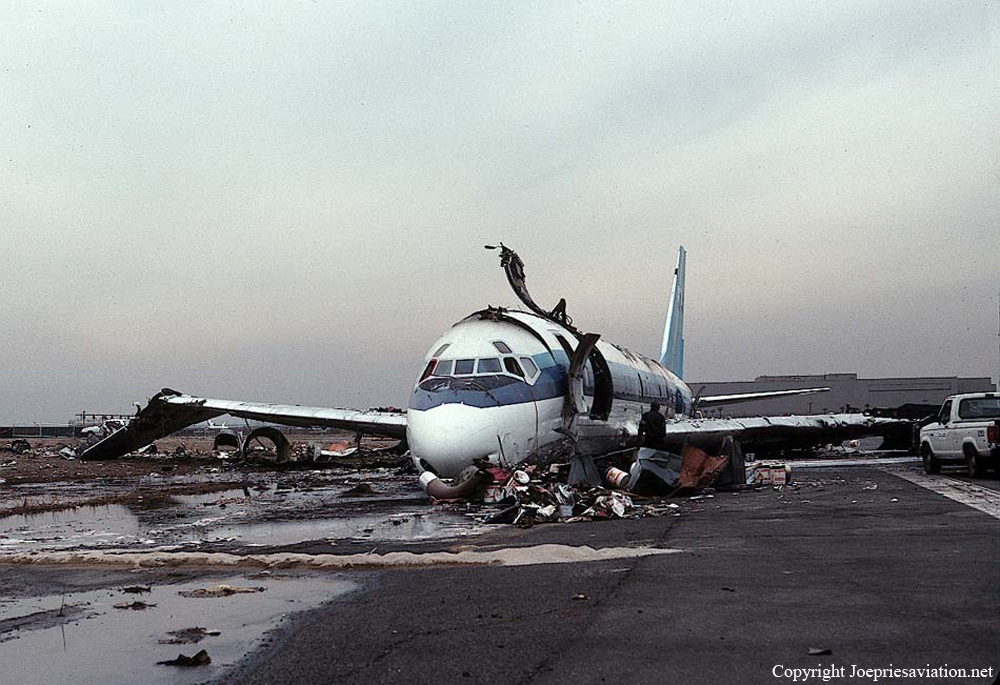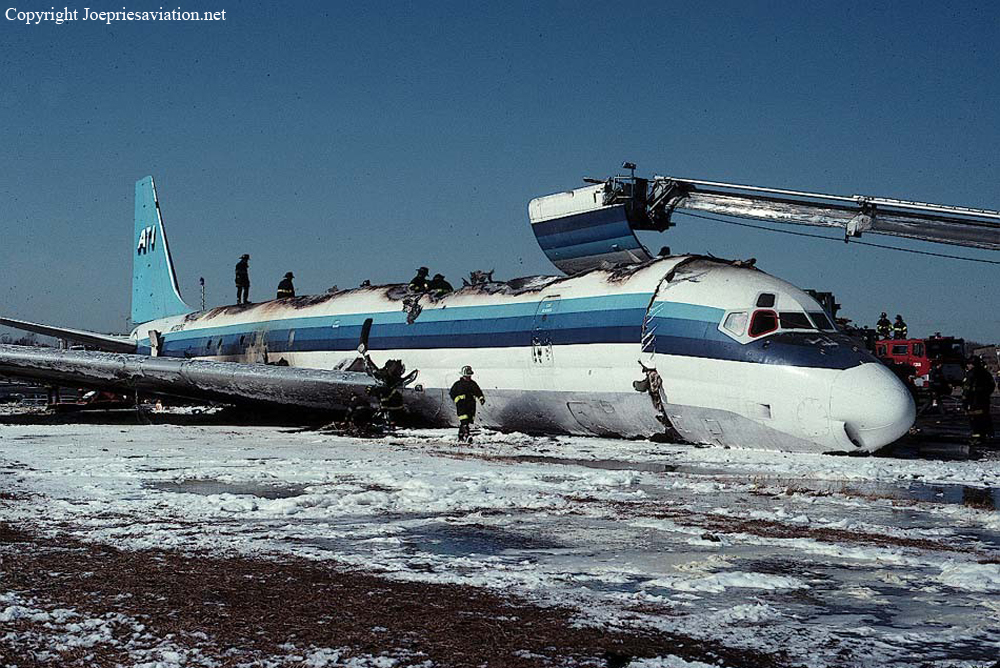Country
Operator Image

Crash of a Douglas DC-8-63CF in Kansas City: 3 killed
Date & Time:
Feb 16, 1995 at 2027 LT
Registration:
N782AL
Survivors:
No
Schedule:
Kansas City - Westover
MSN:
45929
YOM:
1968
Crew on board:
3
Crew fatalities:
Pax on board:
0
Pax fatalities:
Other fatalities:
Total fatalities:
3
Captain / Total hours on type:
4483.00
Copilot / Total hours on type:
218
Aircraft flight hours:
77096
Aircraft flight cycles:
22404
Circumstances:
The airplane crashed immediately after liftoff during a three-engine takeoff. Flightcrew had shortened rest break; rest periods not required for ferry flights. Flight crew fatigue from lack of rest, sleep, and disruption of circadian rhythms. Flightcrew did not have adequate, realistic training in three-engine takeoff techniques or procedures. Flight crew did not adequately understand three-engine takeoff procedures, including significance of vmcg. Flight engineer improperly determined vmcg speed, resulting in value 9 knots too low. During first takeoff attempt, captain applied power to asymmetrical engine too soon, was unable to maintain directional control, and rejected the takeoff. Captain agreed to modify procedure by allowing flight engineer to advance throttle, a deviation of prescribed procedure. FAA oversight of operator was inadequate because the poi and geographic inspectors were unable to effectively monitor domestic crew training and international operations. Existing far part 121 flight time limits & rest requirements that pertained to the flights that the flightcrew flew prior to the ferry flights did not apply to the ferry flights flown under far part 91. Current one-engine inoperative takeoff procedures do not provide adequate rudder availability for correcting directional deviations during the takeoff roll compatible with the achievement of maximum asymmetric thrust at an appropriate speed greater than ground minimum control speed. All three crew members were killed.
Probable cause:
The accident was the consequence of the following factors:
- The loss of directional control by the pilot in command during the takeoff roll, and his decision to continue the takeoff and initiate a rotation below the computed rotation airspeed, resulting in a premature liftoff, further loss of control and collision with the terrain.
- The flightcrew's lack of understanding of the three-engine takeoff procedures, and their decision to modify those procedures.
- The failure of the company to ensure that the flightcrew had adequate experience, training, and rest to conduct the nonroutine flight. Contributing to the accident was the inadequacy of Federal Aviation Administration oversight of air transport international and federal aviation administration flight and duty time regulations that permitted a substantially reduced flightcrew rest period when conducting a non revenue ferry flight under 14 code of federal regulations part 91.
- The loss of directional control by the pilot in command during the takeoff roll, and his decision to continue the takeoff and initiate a rotation below the computed rotation airspeed, resulting in a premature liftoff, further loss of control and collision with the terrain.
- The flightcrew's lack of understanding of the three-engine takeoff procedures, and their decision to modify those procedures.
- The failure of the company to ensure that the flightcrew had adequate experience, training, and rest to conduct the nonroutine flight. Contributing to the accident was the inadequacy of Federal Aviation Administration oversight of air transport international and federal aviation administration flight and duty time regulations that permitted a substantially reduced flightcrew rest period when conducting a non revenue ferry flight under 14 code of federal regulations part 91.
Final Report:
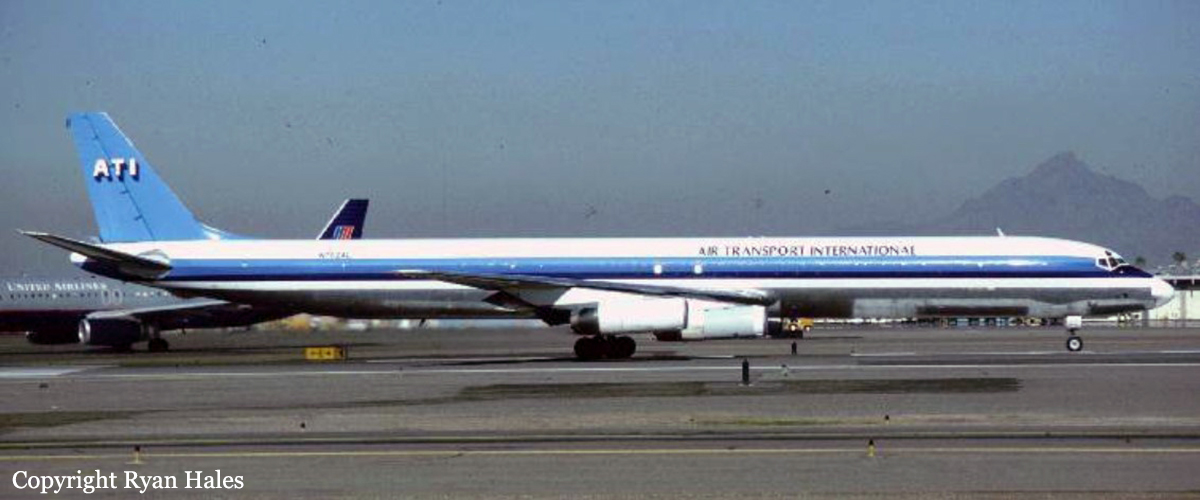


Crash of a Douglas DC-8-63F in Toledo: 4 killed
Date & Time:
Feb 15, 1992 at 0326 LT
Registration:
N794AL
Survivors:
No
Schedule:
Seattle - Toledo
MSN:
45923
YOM:
1968
Flight number:
ATI805
Crew on board:
3
Crew fatalities:
Pax on board:
1
Pax fatalities:
Other fatalities:
Total fatalities:
4
Captain / Total hours on type:
2382.00
Copilot / Total hours on type:
1143
Aircraft flight hours:
70425
Aircraft flight cycles:
22980
Circumstances:
ATI Flight 805 departed from Seattle at 23:20 for a flight to Toledo. The 1st officer was flying the ILS approach to runway 07. For undetermined reasons, he failed to properly capture the ILS localizer and/or glide slope during the approach. At 03:13 the captain decided to carry out a go-around. The aircraft was vectored onto a base leg and given a heading of 100° to intercept the final approach course again. With a 35 knots crosswind (at 180°) on the approach the 1st officer had trouble capturing the localizer/glide slope. At 03:24, as the 1st officer was attempting to stabilize the approach, 3 GPWS glideslope warnings and sink rate warnings sounded. The captain took over control at 03:24:17 and performed another missed approach manoeuvre. He became spatially disoriented and inadvertently allowed an unusual attitude to develop with bank angles up to 80° and pitch angles up to 25°. When in a nose-low and left bank angle attitude, control of the airplane was transferred back to the 1st officer who began levelling the wings and raising the nose of the airplane. Impact with the ground occurred before the unusual attitude recovery was completed. All four occupants were killed.
Probable cause:
The failure of the flight crew to properly recognize or recover in a timely manner from the unusual aircraft attitude that resulted from the captain's apparent spatial disorientation, resulting from physiological factors and/or a failed attitude director.
Final Report:
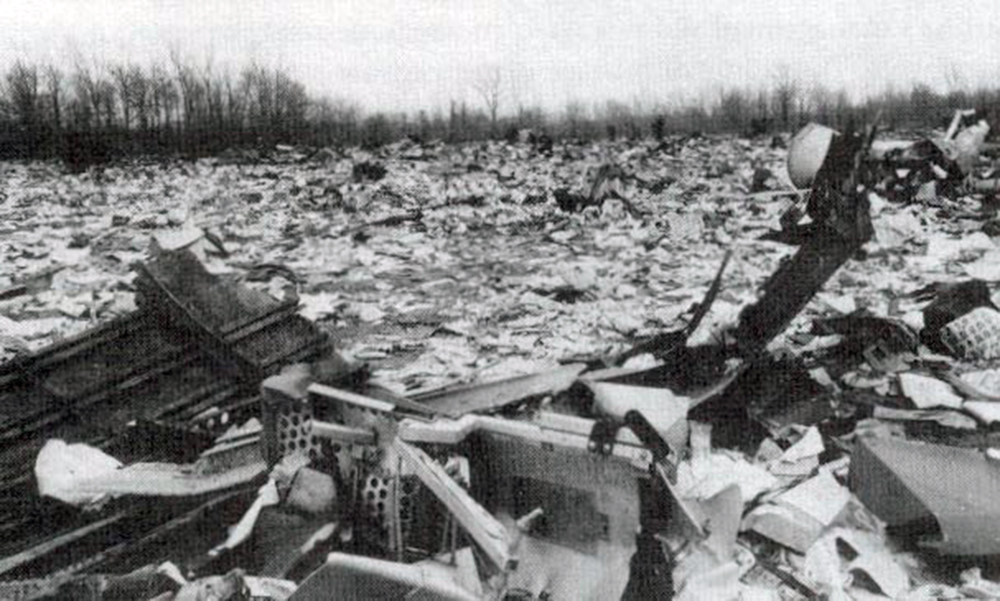
Crash of a Douglas DC-8-62F in New York
Date & Time:
Mar 12, 1991 at 0906 LT
Registration:
N730PL
Survivors:
Yes
Schedule:
New York - Brussels
MSN:
46161
YOM:
1971
Flight number:
8C102
Crew on board:
3
Crew fatalities:
Pax on board:
2
Pax fatalities:
Other fatalities:
Total fatalities:
0
Captain / Total hours on type:
3000.00
Aircraft flight hours:
50145
Circumstances:
Before flight, the flight engineer (f/e) had calculated 'v' speeds and horizontal stabilizer trim setting for takeoff, but neither the captain nor the 1st officer (f/o) had verified them. During rotation for takeoff, the captain noted that the forced needed to pull the yoke aft was greater than normal and that the aircraft would not fly (at that speed). Subsequently, he aborted the attempted takeoff. Realizing the aircraft would not stop on the remaining runway, he elected to steer it to the right to avoid hitting traffic on a highway near the departure end. The aircraft struck ILS equipment; the landing gear collapsed and all 4 engines tore away. Subsequently, the aircraft was destroyed by fire. Investigations revealed the f/e had improperly computed the takeoff data. He had calculated the 'v' speeds and horizontal stabilizer trim setting for 242,000 lbs; however, the actual takeoff wt was 342,000 lbs. Rotation speed (Vr) for this weight was 28 knots above the speed that was used. Investigations revealed shortcomings in the operator's flightcrew training program and questionable scheduling of qualified (but marginally experienced) crew members for the accident flight.
Probable cause:
Improper preflight planning/preparation, in that the flight engineer miscalculated (misjudged) the aircraft's gross weight by 100,000 lbs and provided the captain with improper takeoff speeds; and improper supervision by the captain. Factors related to the accident were: improper trim setting provided to the captain by the flight engineer, inadequate monitoring of the performance data by the first officer, and the company management's inadequate surveillance of the operation.
Final Report:
